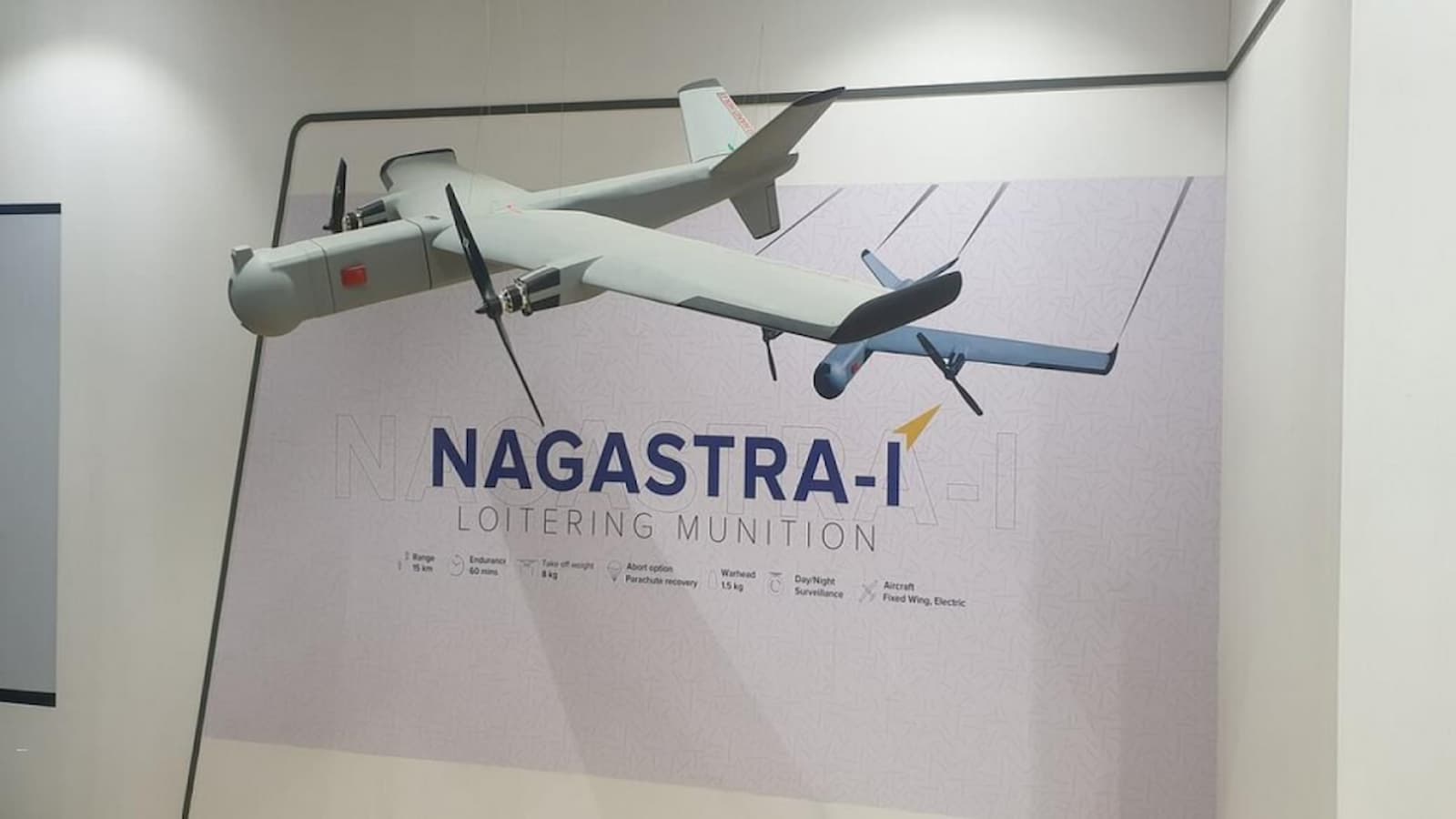Nagastra 1: With the addition of the Nagastra 1, the nation’s first suicide drone produced domestically, to the Indian Army precisely four years after the conflict in the Galwan Valley, India has made tremendous strides forward in the field of drone warfare.
These hovering bombs, produced by Economics Explosive Limited, a Solar Industries subsidiary with its headquarters in Nagpur, represent a significant improvement in India’s defence capabilities, particularly close to the Line of Actual Control (LAC) that borders China in eastern Ladakh.
First appearance of Nagastra 1

Out of a total order of 480 units, the Indian Army has received its first batch of 120 Nagastra 1 drones. India’s deployment demonstrates its commitment to being self-sufficient in defense technologies. These drones, which are made to carry out accurate airstrikes, may quickly and effectively destroy enemy tanks, armoured vehicles, military trucks, bunkers, positions, and armament stores.
Modi and Macron agree to boost defense ties and promote ‘Make in India’
Testing and Strategic Capabilities
Nagastra 1’s portability and versatility increase the Indian Army’s operational strength. This 9-kilogram drone, tested close to the Chinese border in Ladakh’s Nubra Valley, has a 30-minute flight time with a range of 15 km in man-in-loop mode and 30 km in autonomous mode. As per Financial express, it can enter and strike targets covertly without drawing attention from adversarial radars, thanks to its low sound emissions and stealth abilities.
The drone can be used in a variety of combat settings due to its fixed-wing construction, which allows it to carry different payloads for targeted strikes. Its variations are suitable for tank, armoured, and anti-personnel missions and can be fired manually or from a tripod.
Motivation and Historical Context
Four years have passed since the June 15, 2020, battle in the Galwan Valley between Indian and Chinese forces, which claimed the lives of twenty Indian soldiers, including Colonel Santosh Babu. This is when Nagastra 1 was deployed. Even though China hasn’t shared any information about its casualties, the episode made clear how urgently modern warfare and surveillance technology are needed. This meeting had a major impact on India’s strategic decision to become proficient in drone technology, which led to the creation and use of Nagastra 1.
Special Qualities and Cost Effectiveness
Nagastra 1 is notable for its cost-effectiveness in addition to its operating skills. The drone, which will be on display at the Manekshaw Center in April 2023, is around 40% less expensive than similar airborne weaponry that are purchased from Poland and Israel. Nagastra 1 is outfitted with a 1 kg explosive warhead, night and day surveillance cameras, and a soft landing capability. The drone can be recalled and securely landed using a parachute in the event of mission abortion or failure to identify a target, potentially allowing for reuse.
India’s Third Most Successful IPO, Paras Defence & Space Technologies, Sees Stock Surge by 20%
Growing Drone Warfare Importance
Demonstrating their importance in modern warfare, drones have been heavily deployed in wars, including the Russia-Ukraine war and the Israel-Hamas clashes. Realizing this tendency, the Indian Army is improving its capacity with domestic drones. This decision reinforces the ten-year effort for self-reliance by the Modi government, which has pushed Indian companies to produce missiles, drones, and weapons built in their nation.
For instance, a popular video showed a Ukrainian suicide drone shooting at a Russian military jeep from the perspective of another drone’s camera. These kinds of events show how helpful drones are in modern warfare, which helps India’s decision to equip Nagastra 1 among its weapons.
With the release of Nagastra 1, which raised India’s capacity for precise and covert operations, her military policy underwent a major change. As the geopolitical landscape shifts, the Indian Army’s investment in domestic drone technology represents a major step towards enhanced national security and technological self-sufficiency.



